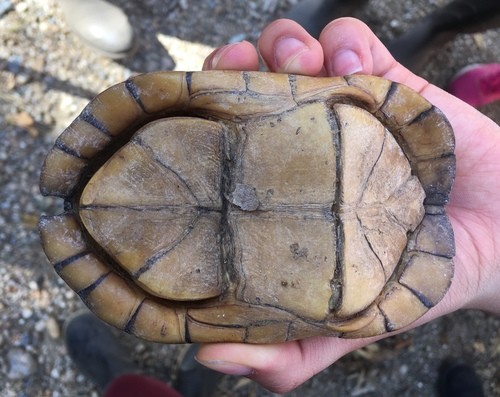Kinosternon leucostomum postinguinale
A species of Mud turtles Scientific name : Kinosternon leucostomum postinguinale Genus : Mud turtles
Kinosternon leucostomum postinguinale, A species of Mud turtles
Scientific name: Kinosternon leucostomum postinguinale
Genus: Mud turtles
Content
Description General Info
 Photo By crawfordaj , used under CC0-1.0 /Cropped and compressed from original
Photo By crawfordaj , used under CC0-1.0 /Cropped and compressed from original Description
As a testament to nature's adaptations, kinosternon leucostomum postinguinale is a species distinguished by its unique dietary preference for snails and mollusks, using its specialized jaws to break the hard shells of its prey. It is marked by considerable nocturnal characteristics, undertaking significant life functions, such as feeding and mating, during the night. This behavior plays a pivotal role in its ecology, helping it avoid predation and temperature extremes in its tropical habitats.
General Info
Lifespan
20-25 years
Diet
Kinosternon leucostomum postinguinale primarily feeds on snails and other small invertebrates, indicating a molluskivorous tendency. Its diet also extends to include crustaceans, insects, and occasionally plant matter.
Appearance
Kinosternon leucostomum postinguinale is a small-to-medium sized turtle with a smooth, domed shell, keenly edged on the sides, and distinguished by a hinge on the plastron. Its primary coloration is a dark black to brown, with a yellowish underside. Males typically possess bigger tails than females. Unique features include a sharp beak and a distinct black blotch behind each eye which distinguishes it from other subspecies.
Behavior
As a semi-aquatic species, kinosternon leucostomum postinguinale spends significant time both underwater and on land. Notably, it undertakes nocturnal foraging pursuits, using keen chemosensory ability to locate food. It typically prefers a solitary lifestyle, engaging in distinctive basking behaviour on logs or rocks during the day. While it's not particularly territorial, it employs covert movements and camouflage as key survival tools in its natural habitat.